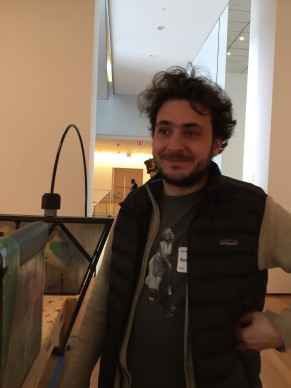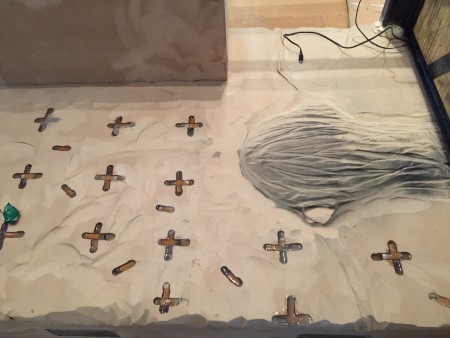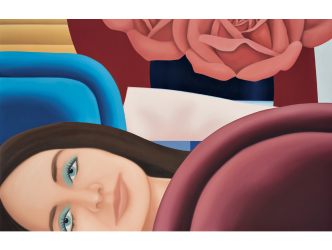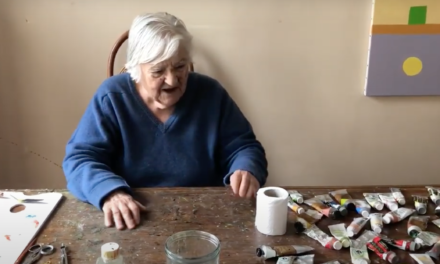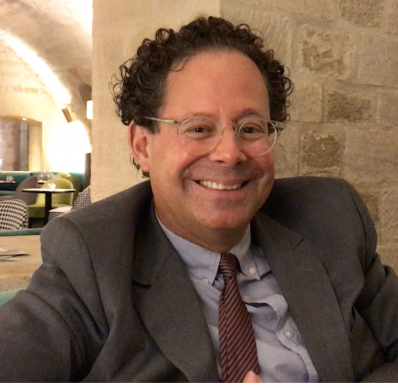In New York two major museums are currently showing two different artists exploring more or less exactly the same subject: the saturation of images in society and the omnipresence of surveillance cameras, tying in to our worries about security. One of these works is rather mediocre and mainstream while the other is quite excellent and innovative.
Let’s begin at the Whitney Museum. Laura Poitras is an American who was born in 1964 and who documents America after 9/11. The story behind her project is highly impressive. ‘The title of the exhibition, Astro Noise, refers to the faint background disturbance of thermal radiation left over from the Big Bang and is the name Edward Snowden gave to an encrypted file containing evidence of mass surveillance by the National Security Agency that he shared with Poitras in 2013.
The Snowden archive partially inspired Poitras’s presentation at the Whitney.’
But you can’t be everything at once. Poitras, who is also a journalist and documentary filmmaker, has conceived a work whose aesthetic result is weak and overly sensationalist. We’re invited to lie back on a bed – God knows we love snuggling on sofas and stretching out on mattresses in museums – and watch videos of night in Yemen or Somalia. The sky… On leaving you realise firstly that you were being filmed all along, and secondly that heat emanates from our bodies. At weekends the flow of visitors lends the room the festive atmosphere of a funfair… Whitney Museum’s objective here is courageous but a series of conferences would have been more opportune.
I was so overwhelmed by this exhibition that I forgot to take photos.
Then I headed to MOMA.
Showing there since last week is the work of the French-Algerian artist Neil Beloufa who was born in 1985.
The Moma exhibition curator Thomas J. Lax takes up the story:
He was exhibited this summer by the French gallery Balice-Hertling in the Belleville neighbourhood of Paris and in 2014 was shown at the prestigious and forward-thinking ICA in London. His subject remains unchanged but he’s going further and further in the aesthetic development of the work. Beloufa produces chaotic, custom-built environments filled with reclaimed materials onto which he projects films and fixed images but also loops covertly filmed images of viewers. More broadly, he broaches other contrasting subjects, like for example the place of zen in our society.
He explains:
The Moma installation, very poorly reproduced in the photos, is an aesthetic achievement. The chaos of the world, with its ridiculous aspects, is present and correct. In the centre of the installation he has dreamed up this absurd machine driven by a rough mechanism that deploys a lot of movement in the vein of those by Picabia or Duchamp at the beginning of the 20th century, but here fully actualised. There are benches where you can sit down. There are images everywhere. The great disarray of images and of human aspirations is present. Neil Beloufa’s work is highly promising and are well worth investigating.
It reminds me, on reflection, of a less humorous version of a sentence I came across by Yoko Ono in the catalogue of her exhibition currently at the Museum of Modern Art in Lyon: “Following the political changes through the year after 9/11, I felt terribly vulnerable – like the most delicate wind could bring tears. (…) The front page of the papers and the tv news were feeding us what they wanted to – assaulting our senses”.
Support independent news on art.
Your contribution : Make a monthly commitment to support JB Reports or a one off contribution as and when you feel like it. Choose the option that suits you best.
Need to cancel a recurring donation? Please go here.
The donation is considered to be a subscription for a fee set by the donor and for a duration also set by the donor.

